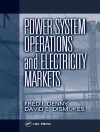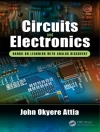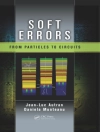This brief is a clear, concise description of the main techniques of time series analysis —stationary, autocorrelation, mutual information, fractal and multifractal analysis, chaos analysis, etc.— as they are applied to the influence of wind speed and solar radiation on the production of electrical energy from these renewable sources. The problem of implementing prediction models is addressed by using the embedding-phase-space approach: a powerful technique for the modeling of complex systems. Readers are also guided in applying the main machine learning techniques for classification of the patterns hidden in their time series and so will be able to perform statistical analyses that are not possible by using conventional techniques.
The conceptual exposition avoids unnecessary mathematical details and focuses on concrete examples in order to ensure a better understanding of the proposed techniques.
Results are well-illustrated by figures and tables.Cuprins
Time-Series Methods.- Analysis of Solar-Radiation Time Series.- Analysis of Wind-Speed Time Series.- Prediction Models for Solar-Radiation and Wind-Speed Time Series.- Modeling Hourly Average Solar-Radiation Time Series.- Modeling Hourly Average Wind-Speed Time Series.- Clustering Daily Solar-Radiation Time Series.- Clustering Daily Wind-Speed Time Series.- Concluding Remarks. Appendix: List-of-Functions.
Despre autor
Luigi Fortuna received the degree of electrical engineering (cum laude) from the University of Catania, Italy, in 1977. He is a Full Professor of system theory with the University Of Catania. He was the Coordinator of the courses in electronic engineering and the Head of the Dipartimento di Ingegneria Elettrica Elettronica e dei Sistemi. From 2005 to 2012, he was the Dean of the Engineering Faculty. He currently teaches complex adaptive systems and robust control. He has published more than 500 technical papers and twelve scientific books. His scientific interests include robust control, nonlinear science and complexity, chaos, cellular neural networks, soft-computing strategies for control, robotics, micronanosensor and smart devices for control, and nanocellular neural networks modeling. Dr. Fortuna was the IEEE Circuits and Systems (CAS) Chairman of the CNN Technical Committee, IEEE CAS Distinguished Lecturer from 2001 to 2002, and IEEE Chairman of the IEEE CAS Chapter Central-South Italy.
Giuseppe Nunnari received the “Laurea” degree in electrical engineering (cum laudae) from the University of Catania, Catania, Italy, in 1979. He was a software engineer in private companies until 1983 and Researcher of the Italian National Research Council (CNR), from May 1983 to October 1992, where he carried out research concerning the modelling and processing of geophysical data. From November 1992 he joined with the University of Catania, Faculty of Engineering, were he has served as associate professor of System Theory and Automatic Control, till September 2001 and as a professor up to the present days. His research interests include the modelling and control of dynamic systems, signal and image processing, soft computing and modelling of environmental systems. He is author or co-author of about 230 scientific papers published in international journals, conference proceedings and books chapters. He has also co-authored 3 scientific books published by international publishers. Silvia Nunnari received the degree in computer engineering in 2010, the master degree in computer engineering in 2012 and a Ph D in Systems Engineering in 2015. She has co-authored 6 papers in international journals and conference proceedings.












